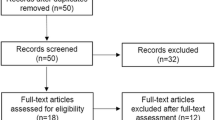Abstract
Background
The presence of fixed, dilated pupils after cardiac surgery is an ominous sign, typically indicating severe diffuse hypoxic-ischemic brain injury. Rarely, however, this finding can be seen as a result of focal midbrain ischemia. It is important to differentiate between these syndromes, as the latter might be amenable to acute stroke treatments, and because they affect consciousness very differently.
Case
A 46-year-old man with diffuse atherosclerosis underwent coronary artery bypass grafting and closure of an incidentally discovered patent foramen ovale. He underwent neurologic evaluation on post-operative day 6 because he was not speaking and appeared to have a new right hemiparesis. Eye movements, pupillary, and lid function were all normal at this time. MRI showed multiple posterior circulation infarcts, involving both cerebral peduncles. On post-operative day 12, he became unresponsive, quadriplegic, and had bilaterally fixed, dilated pupils. CT showed low attenuation in nearly the entirety of both cerebral peduncles.
Discussion
Midbrain infarction is rare. Bilateral midbrain infarction is even rarer and typically presents as locked-in syndrome with preservation of pupillary function and at least vertical eye movements. In our review of the literature, we found only three other cases of midbrain infarction associated with bilateral mydriasis. As in our case, these characteristically involved the anteromedial midbrain bilaterally.
Conclusions
Fixed, dilated pupils after cardiac surgery can rarely be caused by bilateral anteromedial midbrain infarctions. It is important to differentiate this from the much more common diffuse hypoxic-ischemic injury.

Similar content being viewed by others

References
Booth CM, Boone RH, Tomlinson G, Detsky AS. Is this patient dead, vegetative, or severely neurologically impaired? Assessing outcome for comatose survivors of cardiac arrest. JAMA 2004;291:870–9.
Bauer G, Gerstenbrand F, Rumpl E. Varieties of the locked-in syndrome. J Neurol. 1979;221(2):77–91.
Martin PJ, Chang HM, Wityk R, Caplan LR. Midbrain infarction: associations and aetiologies in the New England Medical Center posterior circulation registry. J Neurol Neurosurg Psychiatry. 1998;64:392–5.
Kumral E, Bayulkem G, Akyol A, Yunten N, Sirin H, Sagduyu A. Mesencephalic and associated posterior circulation infarcts. Stroke 2002;33:2224–31.
Chia L-G. Locked-in syndrome with bilateral ventral midbrain infarcts. Neurology 1991;41:445–6.
Karp JS, Hurtig HI. “Locked-in” state with bilateral midbrain infarcts. Arch Neurol. 1974;30:176–8.
Park SA, Sohn YH, Kim WC. Locked-in syndrome with bilateral peduncular infarct. J Neuroimag. 1997;7:126–8.
Zakaria T, Flaherty ML. Locked-in syndrome resulting from bilateral cerebral peduncle infarctions. Neurology 2006;67:1889.
Dehaene I, Dom R. A mesencephalic locked-in syndrome. J Neurol. 1982;227:255–9.
Leigh RJ, Zee DS. Synthesis of the command for conjugate eye movements. The neurology of eye movements, 4th ed. Oxford: Oxford University Press; 2006.
Meienberg O, Mumenthaler M, Karbowski K. Quadriparesis and nuclear oculomotor palsy with total bilateral ptosis mimicking coma: a mesencephalic “locked-in” syndrome? Arch Neurol. 1979;36:708–10.
Ropper AH, Miller DC. Acute traumatic midbrain hemorrhage. Ann Neurol. 1985;18:80–6.
Worthington JM, Halmagyi GM. Bilateral total ophthalmoplegia due to midbrain hematoma. Neurology 1996;47:1176–7.
Selim M. Perioperative stroke. N Engl J Med. 2007;356:706–13.
Alberts MJ, Brass LM, Perry A, Webb D, Dawson DV. Evaluation times for patients with in-hospital strokes. Stroke 1993;24:1817–22.
Blacker DJ. In-hospital stroke. Lancet Neurol. 2003;2:741–6.
Author information
Authors and Affiliations
Corresponding author
Rights and permissions
About this article
Cite this article
Burns, J.D., Manno, E.M. & Wijdicks, E.F.M. An Unusual Cause of Fixed Dilated Pupils After Cardiac Surgery. Neurocrit Care 9, 370–373 (2008). https://doi.org/10.1007/s12028-008-9110-y
Published:
Issue Date:
DOI: https://doi.org/10.1007/s12028-008-9110-y



